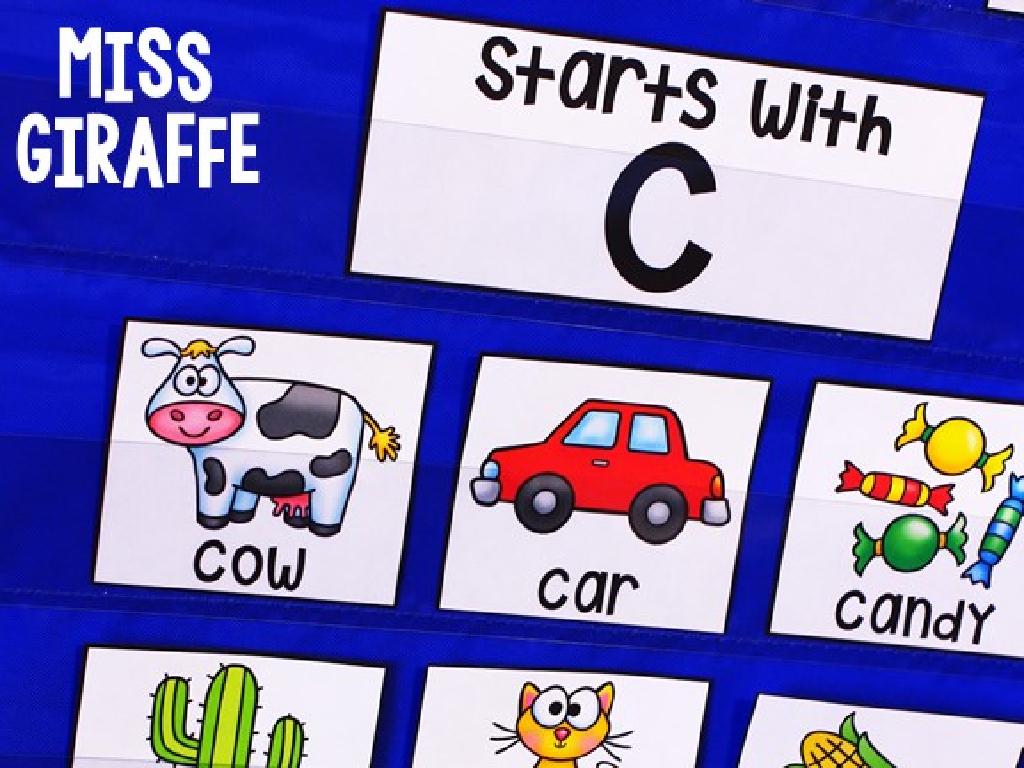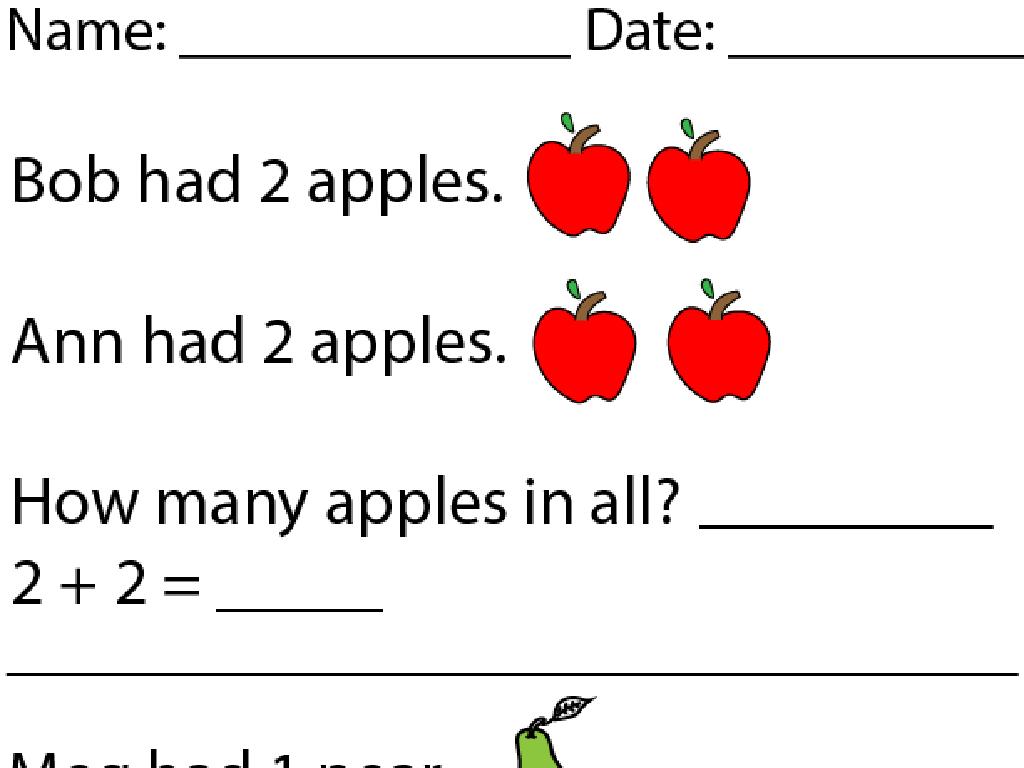Are The Modifiers Used Correctly?
Subject: Language arts
Grade: Eighth grade
Topic: Misplaced Modifiers
Please LOG IN to download the presentation. Access is available to registered users only.
View More Content
Correct Use of Modifiers
– What are misplaced modifiers?
– Words/phrases that describe something but are placed wrongly, causing confusion.
– Impact of misplaced modifiers
– Can change the meaning of a sentence or make it unclear or humorous.
– Examples of correct vs. incorrect
– ‘Eating ice cream, the sun felt hot’ vs. ‘The sun felt hot while we were eating ice cream.’
– Strategies to avoid mistakes
– Review sentences to ensure modifiers are close to the words they describe.
|
This slide introduces the concept of misplaced modifiers, which are words or phrases that are not placed correctly in relation to the words they modify, leading to potential confusion or unintended meanings. Emphasize the importance of clarity in writing and how misplaced modifiers can alter the intended message or even add unintended humor to a sentence. Provide clear examples showing the difference proper placement makes, and offer strategies for students to use in their writing, such as reading sentences out loud to check for clarity and ensuring that modifiers are placed next to the word or phrase they’re meant to describe. Encourage students to be mindful of their modifier placement to improve their writing skills.
Understanding Modifiers in Writing
– Define what a modifier is
– A word that describes or changes the meaning of another word.
– Examples: adjectives and adverbs
– Adjectives modify nouns, e.g., ‘blue sky’. Adverbs modify verbs, e.g., ‘runs quickly’.
– Modifiers’ role in enhancing writing
– They add detail, clarity, and style to our sentences.
– Practice identifying modifiers
|
Begin with a clear definition of modifiers, ensuring students understand that they are words that describe or provide more information about other words. Use common examples like adjectives and adverbs to illustrate how modifiers work. Explain that modifiers are crucial for adding detail and depth to writing, making it more vivid and interesting. To reinforce learning, engage students in identifying modifiers within sentences, both in their own writing and in literature. This will help them recognize the importance of placement and usage to convey the intended meaning.
Misplaced Modifiers: Clarity in Writing
– Defining ‘misplaced modifier’
– A modifier is ‘misplaced’ if it’s too far from the word it describes, causing confusion.
– Examples of misplaced modifiers
– ‘Eating ice cream, the sun felt warm’ implies the sun is eating ice cream.
– Confusion from misplaced modifiers
– Misplaced modifiers can make sentences humorous or unclear.
– Correcting misplaced modifiers
– Place modifiers close to the words they describe to avoid confusion.
|
This slide introduces the concept of misplaced modifiers, which are words or phrases that are separated from the words they modify, leading to potential confusion or unintended meanings. Use examples to illustrate how misplaced modifiers can alter the meaning of a sentence and make it sound absurd or unclear. Emphasize the importance of placing modifiers near the words they describe to maintain clarity in writing. Encourage students to identify and correct misplaced modifiers in example sentences and in their own writing. This will help them communicate more effectively and avoid common errors.
Correcting Misplaced Modifiers
– Strategies to fix misplaced modifiers
– Use clear, direct language placement
– Place modifiers near their targets
– Modifiers should be close to the words they describe to avoid confusion
– Practice: Identify and correct errors
– We’ll work through examples together in class
– Importance of precise modification
|
This slide aims to teach students how to correct misplaced modifiers, which are words, phrases, or clauses that are separated from the words they modify, leading to unclear or humorous sentences. Start by discussing strategies for identifying misplaced modifiers, such as looking for details that seem oddly placed or sentences that make sense when rearranged. Emphasize the importance of placing descriptive words and phrases directly next to the word they modify to ensure clarity. During practice, provide sentences with misplaced modifiers and guide students to correct them. Highlight the importance of precise language to convey the intended meaning. Encourage students to ask questions and discuss why certain placements of modifiers can change the meaning of a sentence.
Let’s Practice: Misplaced Modifiers
– Interactive class examples
– We’ll look at sentences together and identify errors
– Group activity on modifiers
– Work in groups to spot and correct errors
– Find and fix misplaced modifiers
– What’s wrong with ‘We saw a fence walking our dog’?
– Discuss clarity in corrections
– Why does ‘Walking our dog, we saw a fence’ make more sense?
|
This slide is for an interactive class activity focused on identifying and correcting misplaced modifiers. Start with examples that demonstrate common mistakes with modifiers and work through them as a class. Then, break the class into small groups and give them sentences with misplaced modifiers to correct. After the activity, come back together as a class to discuss the changes each group made. Emphasize how placing modifiers correctly clarifies the meaning of sentences. For example, ‘We saw a fence walking our dog’ implies the fence is walking the dog, which is nonsensical. When corrected to ‘Walking our dog, we saw a fence,’ it’s clear that ‘walking our dog’ describes the action of the people who then saw a fence. This exercise will help students understand the importance of word placement for clear communication.
Your Turn to Shine: Using Modifiers Correctly
– Individual writing exercise
– Create sentences with correct modifiers
– Write sentences that include modifiers placed directly next to the word they describe.
– Peer review activity
– Pair up with a classmate to read and review each other’s sentences.
– Exchange and critique each other’s sentences
– Provide constructive feedback on the placement of modifiers in your peer’s sentences.
|
This slide introduces an interactive class activity focused on the correct use of modifiers. Students will begin by writing their own sentences, ensuring that modifiers are placed correctly to avoid ambiguity. After writing, they will engage in a peer review process, exchanging papers with a classmate to critique and learn from each other’s work. This activity not only reinforces the lesson on modifiers but also develops students’ editing and feedback skills. Teachers should monitor the exchanges to ensure constructive feedback is given and to assist with any misunderstandings. Possible variations of the activity could include creating sentences with intentionally misplaced modifiers for peers to correct, or identifying and correcting misplaced modifiers in provided paragraphs.
Class Activity: Modifier Scavenger Hunt
– Form groups for scavenger hunt
– Find misplaced modifiers in texts
– Look in magazines, newspapers, or online
– Correct sentences and note changes
– Explain why the modifier was misplaced
– Present findings to the class
|
This interactive class activity is designed to help students understand the concept of misplaced modifiers and how they can alter the meaning of a sentence. Divide the class into small groups and provide a variety of texts for them to examine. Encourage them to look for sentences that don’t quite make sense because of a misplaced modifier. Once they find examples, they should work together to correct the sentences and be prepared to explain their reasoning behind the changes. This will not only help them recognize common mistakes but also understand the importance of modifier placement for clarity in writing. Possible variations of the activity could include creating a competition to see which group can find and correct the most modifiers, or having students create their own sentences with misplaced modifiers for others to correct.
Conclusion & Homework: Modifiers Matter
– Recap on misplaced modifiers
– Significance of correct modifier placement
– Proper placement enhances clarity and avoids confusion in sentences.
– Homework: Craft a short story
– Write a story using what you’ve learned about modifiers.
– Focus on correct modifier use
– Ensure modifiers are placed next to the words they describe.
|
As we wrap up today’s lesson, it’s crucial to remember that misplaced modifiers can lead to unclear and often humorous misunderstandings in our writing. Emphasize the importance of placing modifiers close to the words they modify to maintain clarity. For homework, students should write a short story where they apply their knowledge of modifiers, ensuring that each modifier is correctly placed to convey the intended meaning. This exercise will help reinforce today’s lesson and improve their writing skills. Encourage creativity and remind them to proofread their work for any misplaced modifiers.






